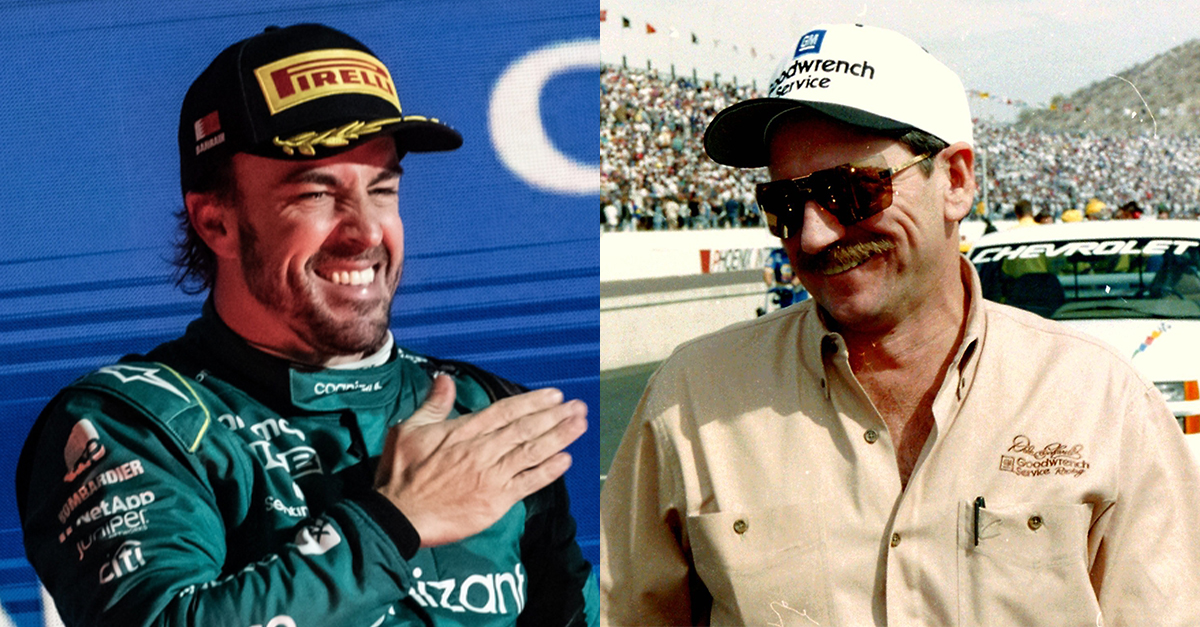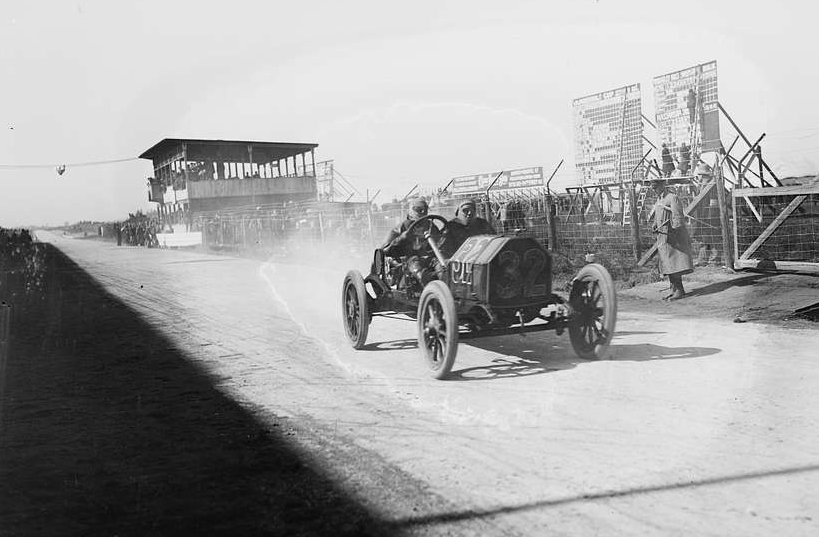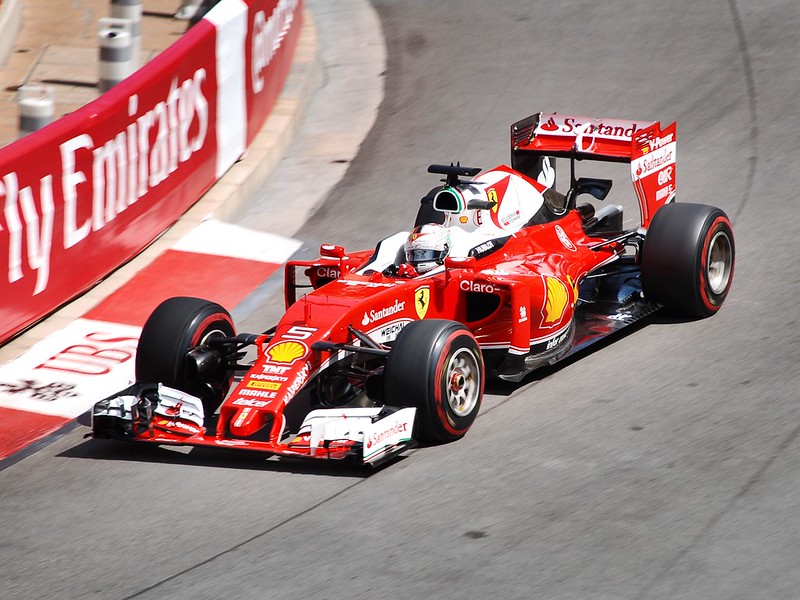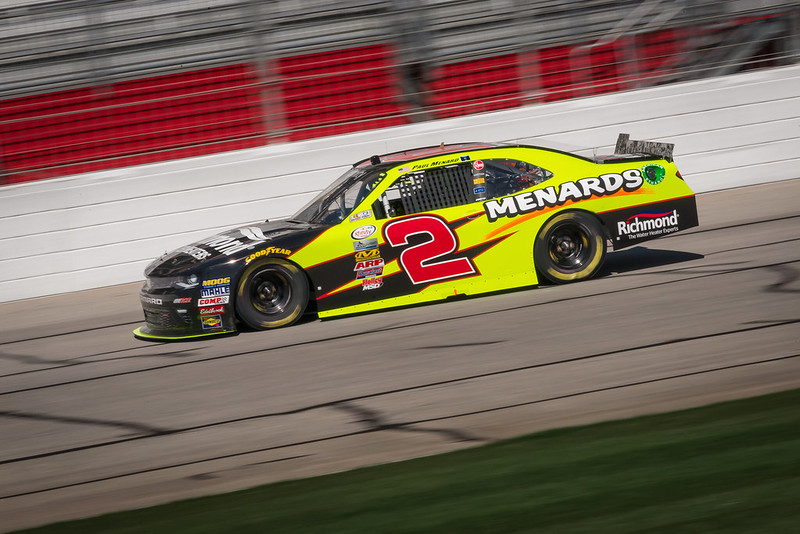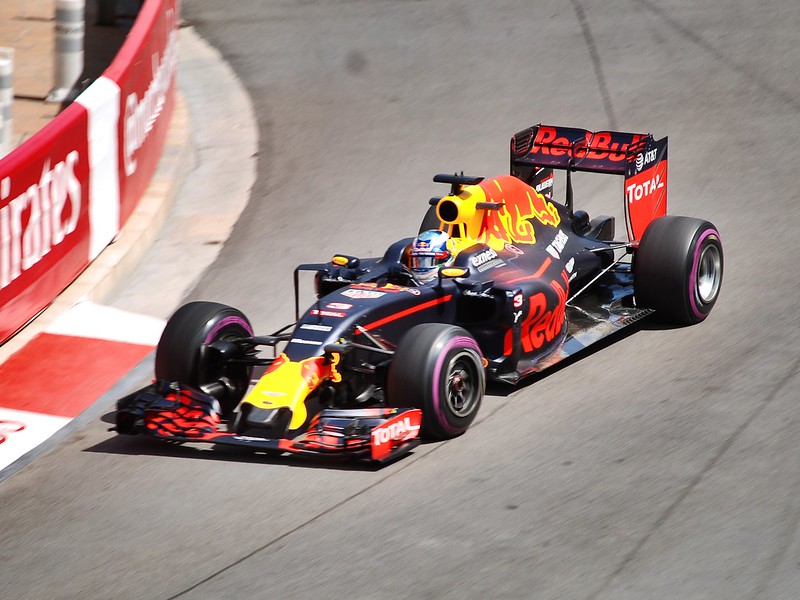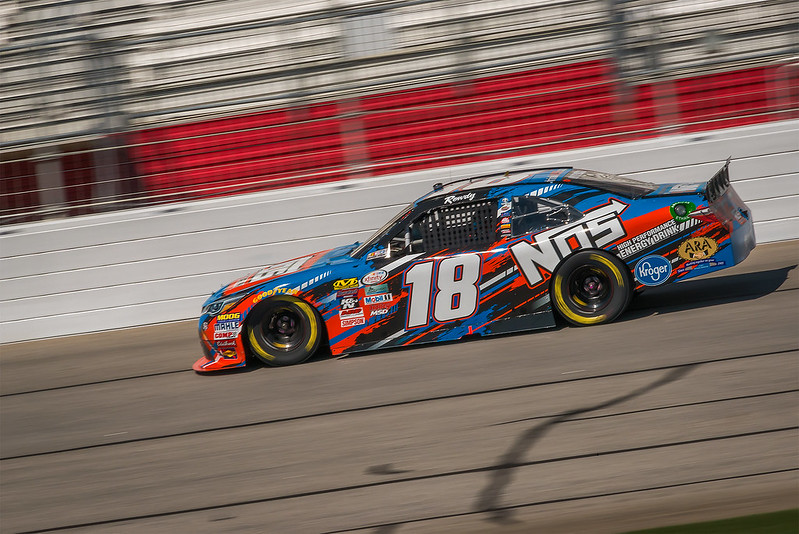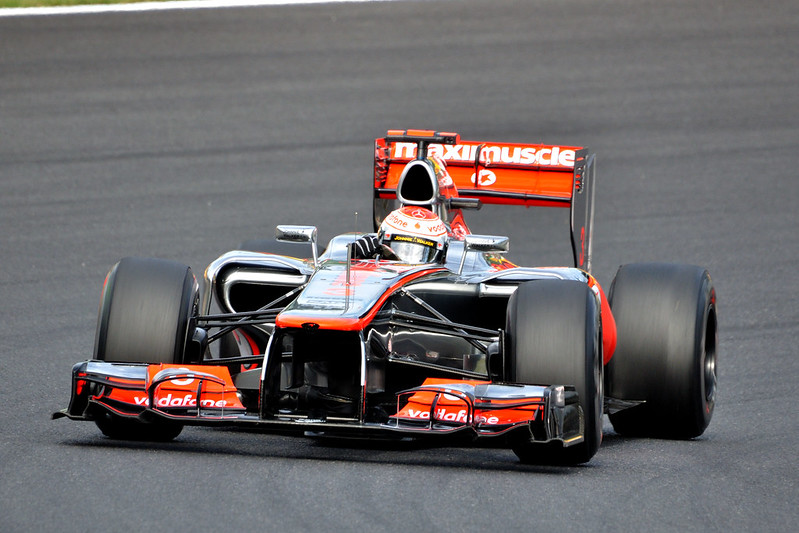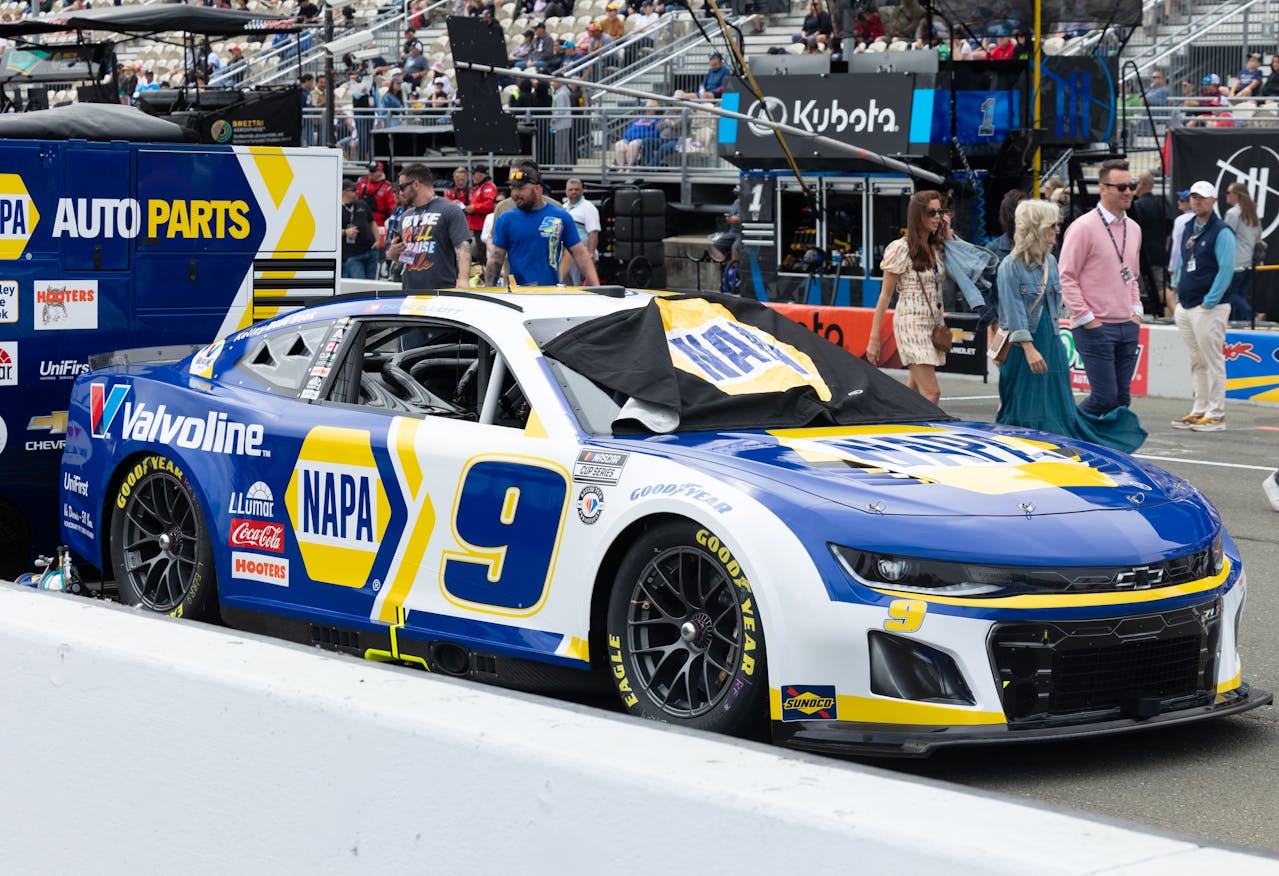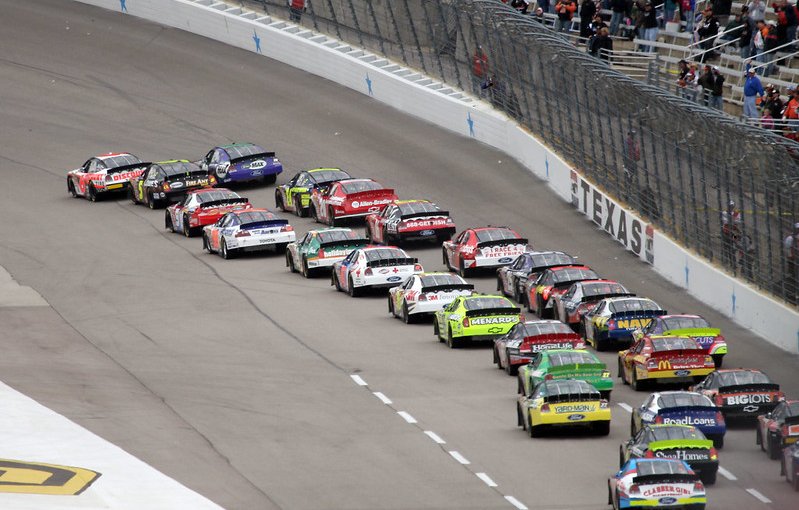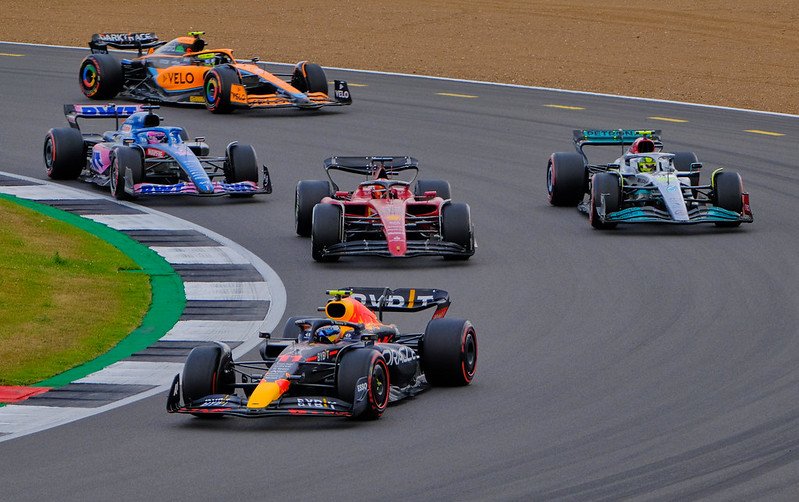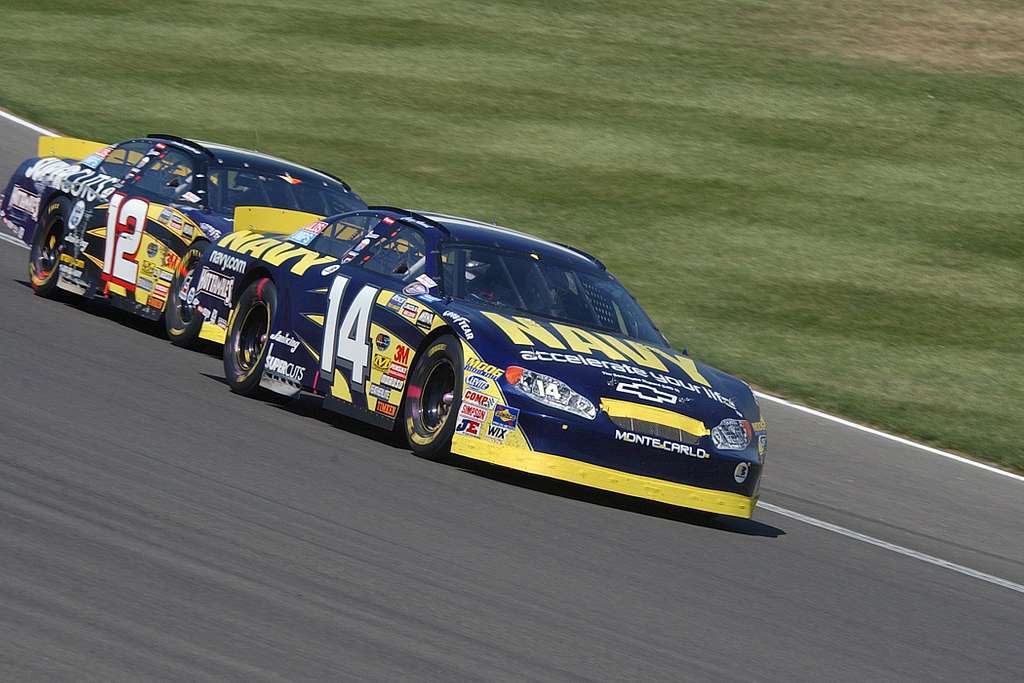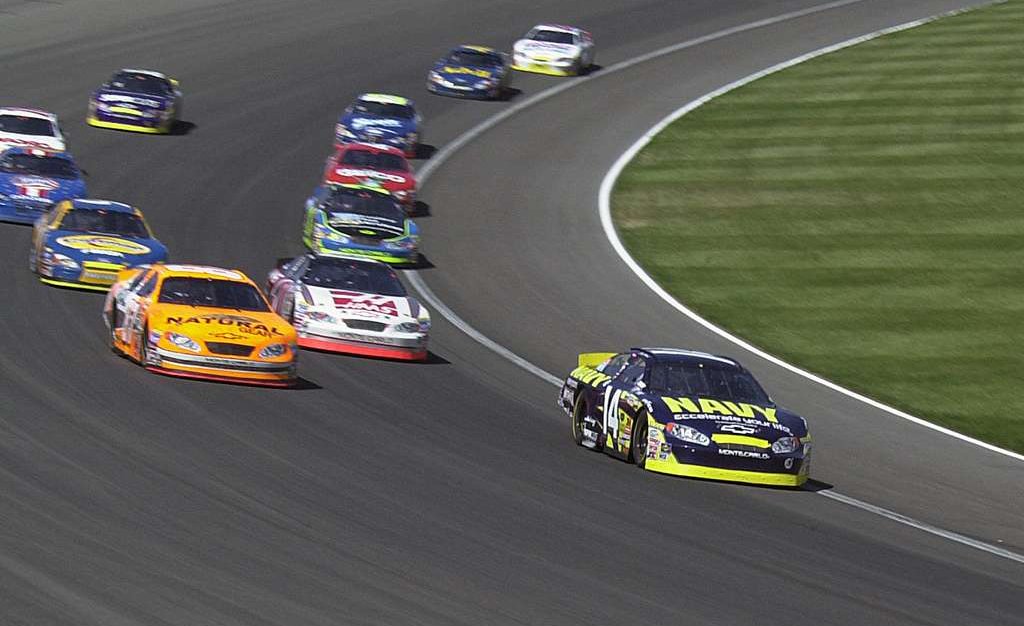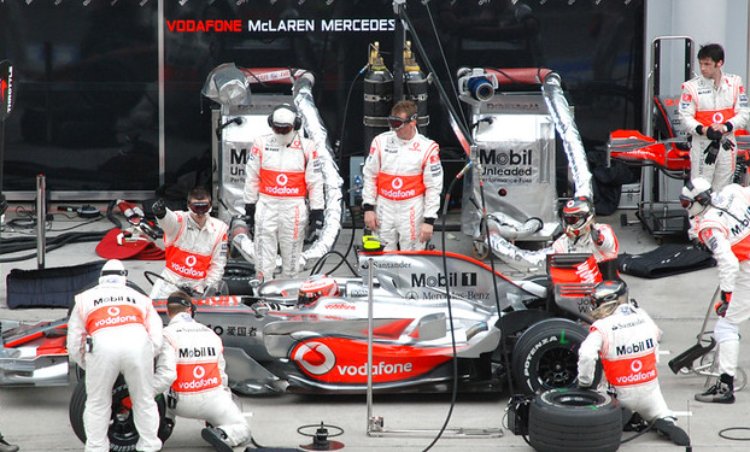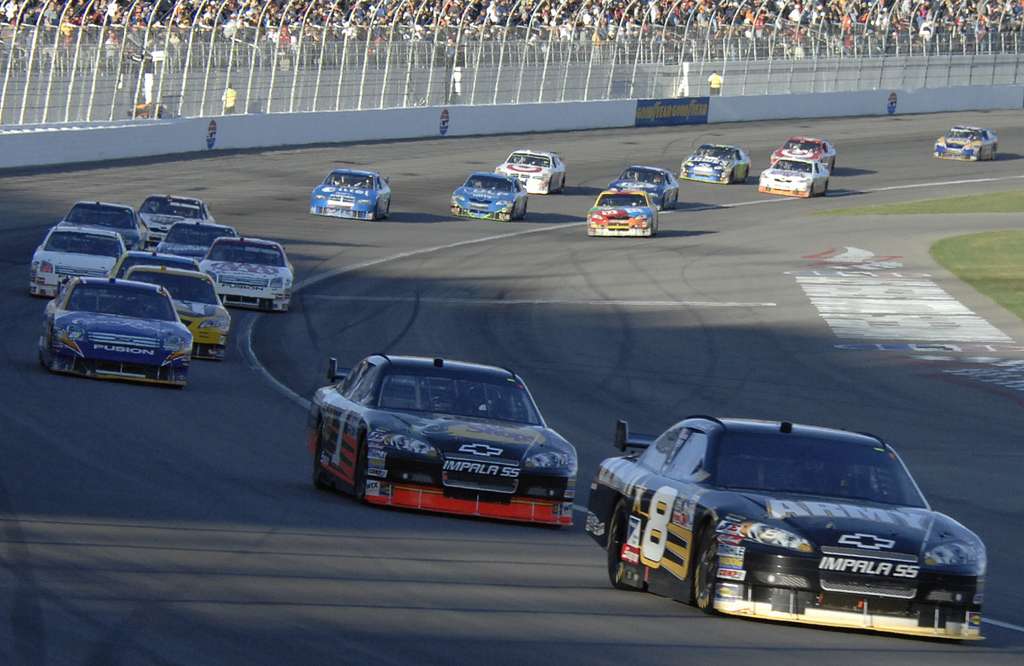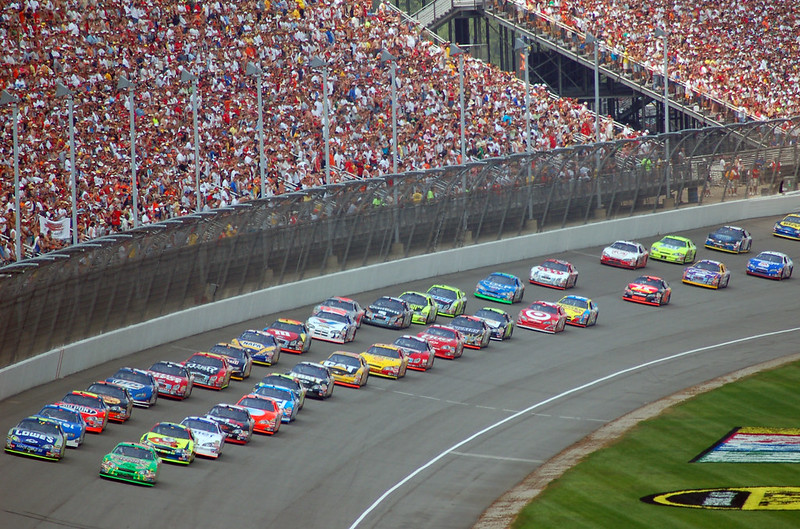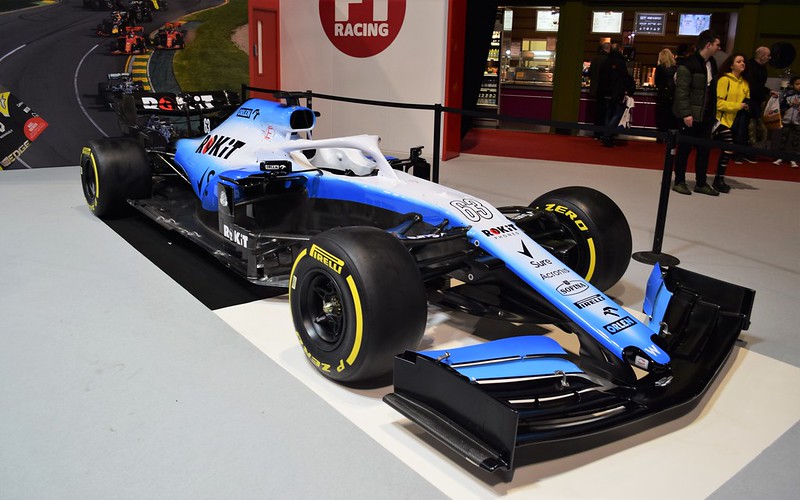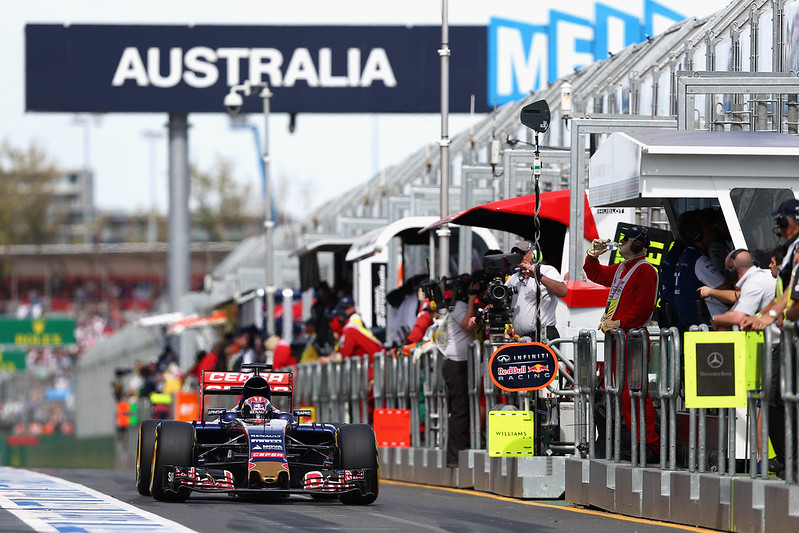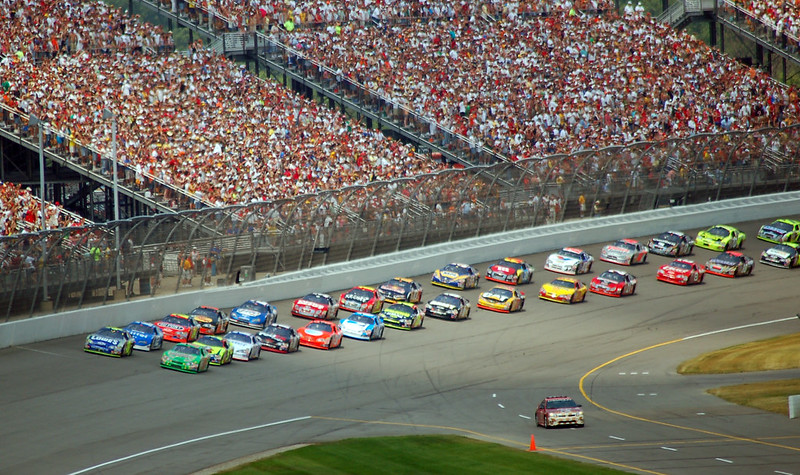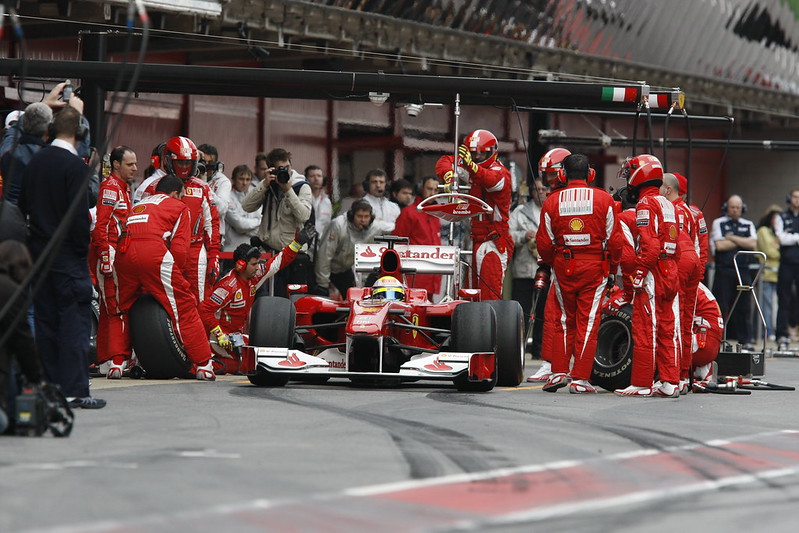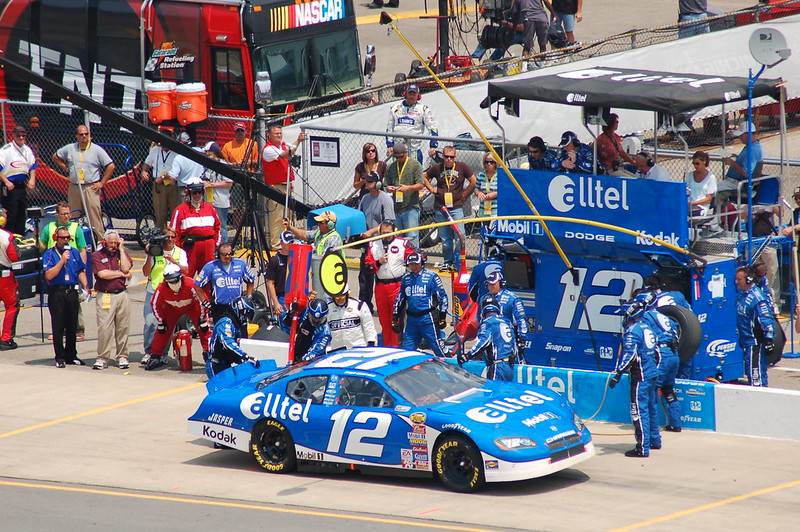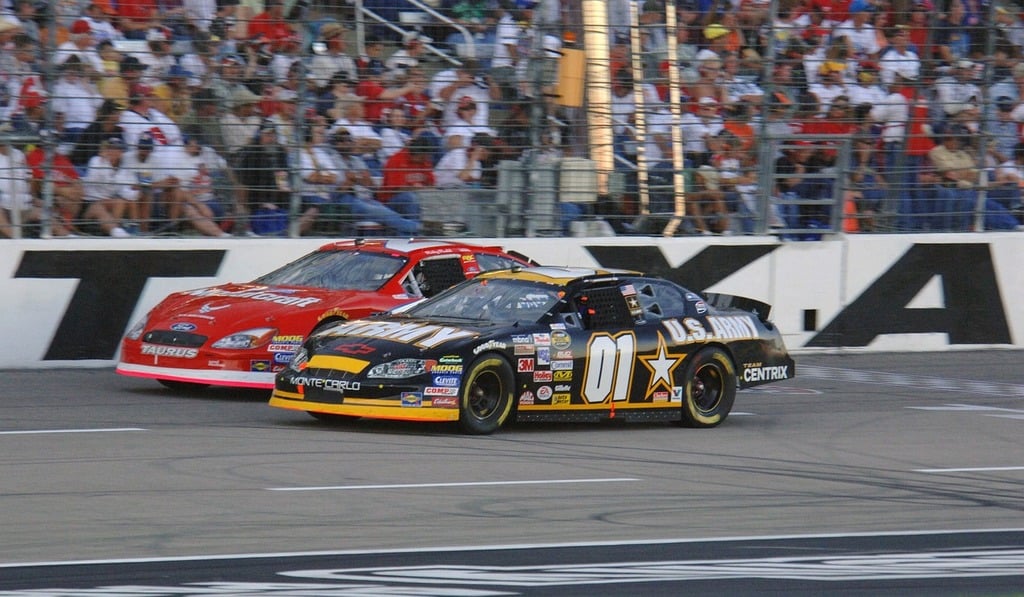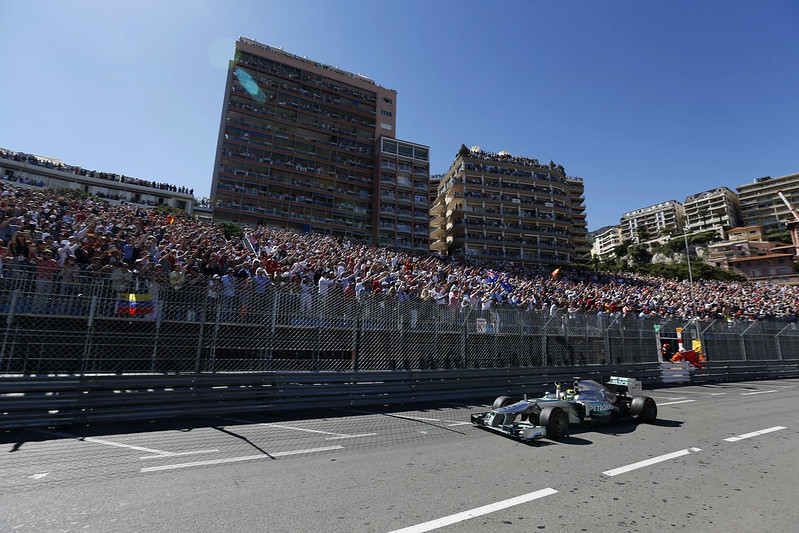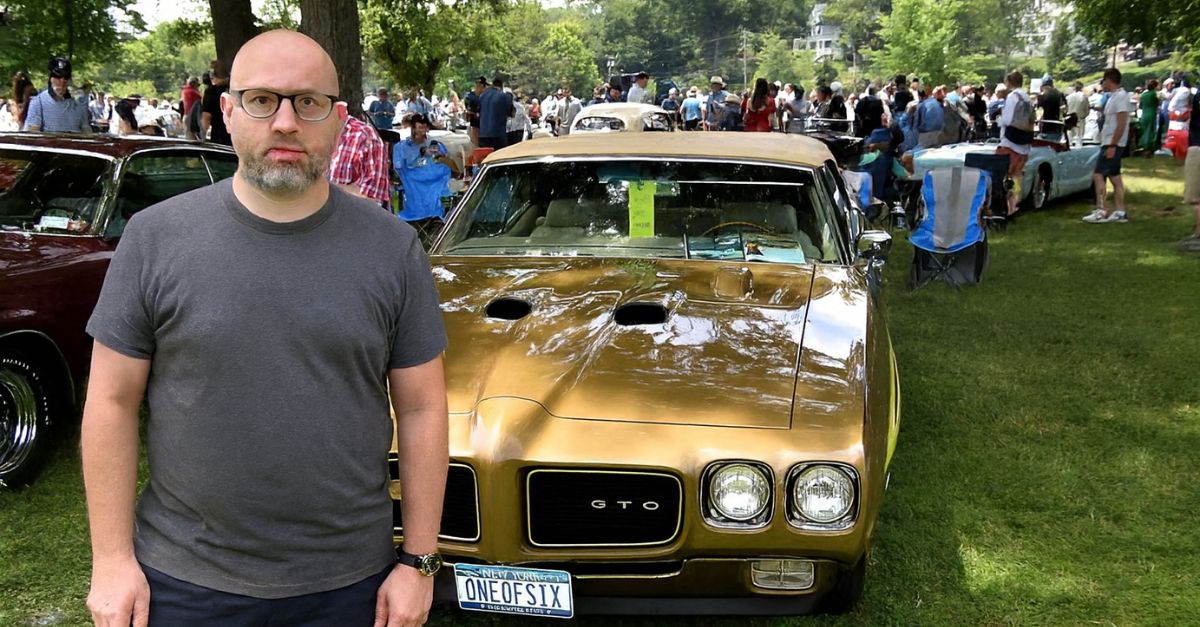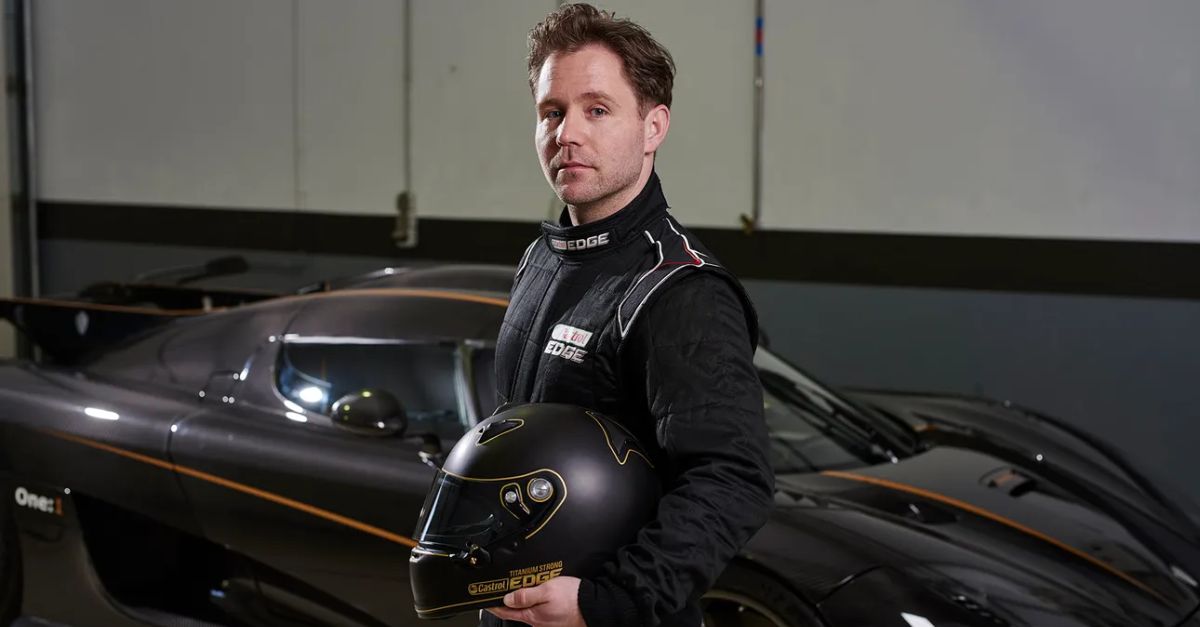NASCAR And Formula 1
Despite the fact that NASCAR and Formula 1 represent the pinnacle of their respective racing genres, many car fans only watch one series and don't know much about the other. Well, now it's time to compare.
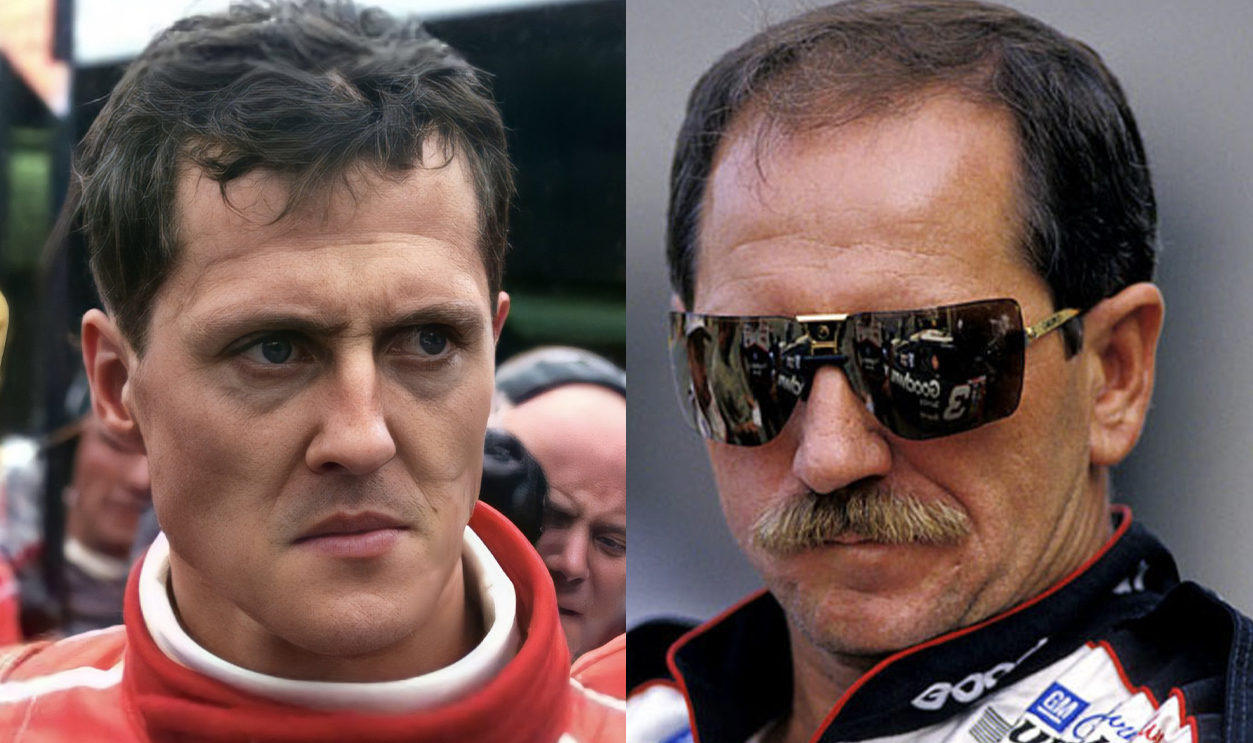
Formula 1: European History
Formula 1 took off in post-war Europe. Young men were returning from the fighting with their blood still boiling, and were looking for somewhere to put all that energy. They found it in the speed and meticulous technical challenge of F1.
Not so for NASCAR.
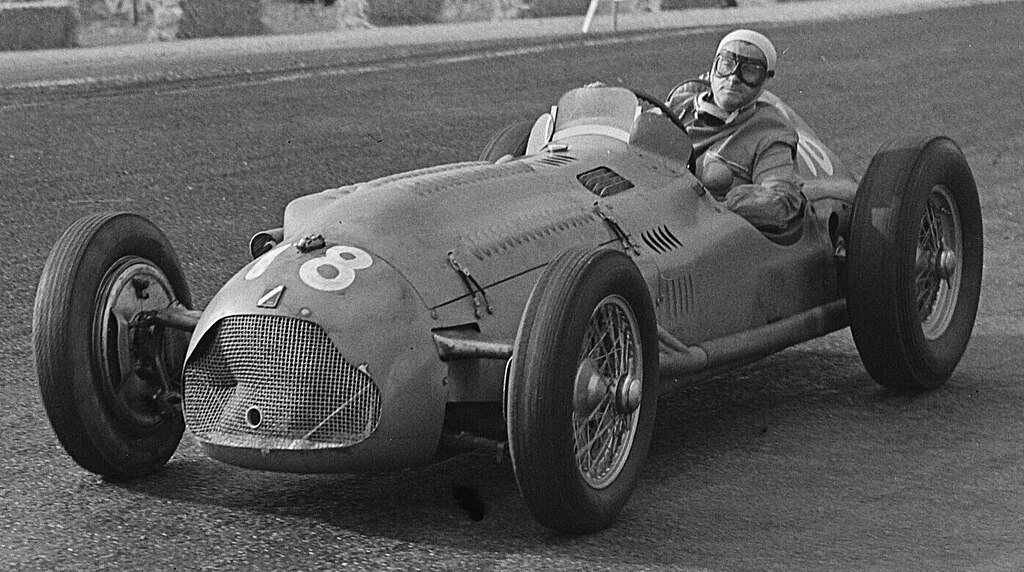 Noske, J.D., CC BY-SA 3.0, Wikimedia Commons
Noske, J.D., CC BY-SA 3.0, Wikimedia Commons
NASCAR: American History
NASCAR's history starts even earlier than Formula 1, and in a different locale entirely. During the prohibition era of America in the 1920s and 30s, bootleggers needed speedy cars to elude law enforcement as they transported illicit alcohol.
This need for speed lived on past prohibition, and sparked what would become NASCAR, or the National Association for Stock Car Auto Racing. It's not just the histories that are different, though.
Formula 1: Varied Circuits
Formula 1 has highly varied circuits, from street races such as Monaco and Miami to high-speed temples like Monza. All of them, however, contain a mix of corners, straightaways, and other road features that require drivers to race at different speeds and with different rhythms and skills.
 otterboris, CC BY 3.0, Wikimedia Commons
otterboris, CC BY 3.0, Wikimedia Commons
NASCAR: Oval Circuits
People who don't watch NASCAR often criticize it for its regulation oval circuits, which look easier than F1's twisting tracks. But if you've ever seen a NASCAR race, you'll likely realize quite quickly it's anything but simple.
Drivers must have incredible endurance matched with pitch-perfect consistency as they go around the track. More than that, not every oval is the same: They can be longer or shorter, and have different degrees of banking, allowing drivers to take higher or lower racing lines. Plus, tracks like Watkins Glen aren't even ovals.
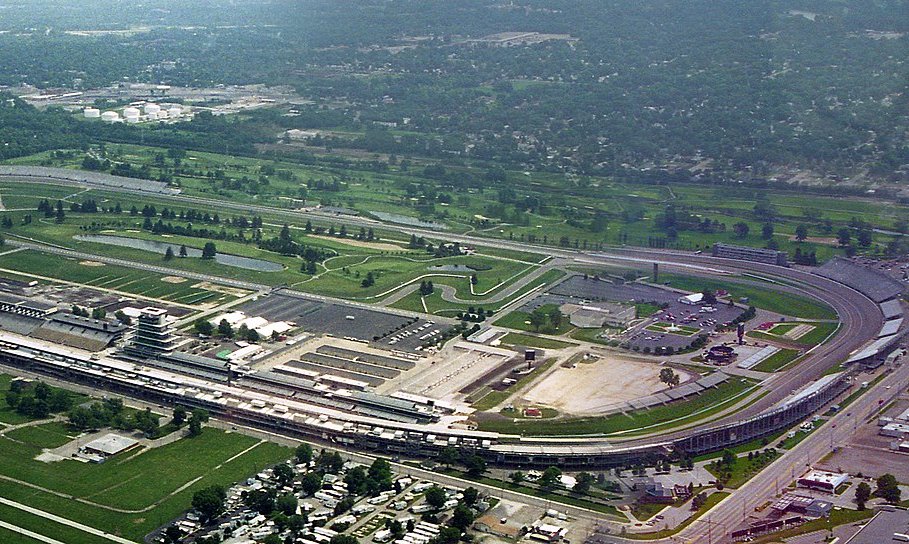 Rick Dikeman, CC BY-SA 3.0, Wikimedia Commons
Rick Dikeman, CC BY-SA 3.0, Wikimedia Commons
Formula 1: Different And Daring
Formula 1 is all about technological advancement. Although the FIA, Formula 1's governing body, puts limits on things like power unit changes and certain car specs, each individual team designs and tweaks practically every component of the car's body, and everyone is constantly trying to push the envelope of innovation, resulting in some very different looks.
NASCAR: Together As One
Whereas Formula 1 is all about individual mechanical innovation, NASCAR has big limitations on what the car can look like. Teams follow a strict template, making the cars relatively uniform.
As a result, NASCAR tends to have less "dominating" teams, as F1 outfits such as Ferrari, Mercedes, and most recently Red Bull have been in the past, and driver decisions can have a relatively bigger role to play in NASCAR than in F1—not that they aren't crucial there too.
Formula 1: Open Wheel Cars
First and foremost, Formula 1 cars are defined by their "open wheel" structure. That is, the wheels aren't tucked into rims beneath the car body, but rather extend off the body of the car. NASCAR is much different.
NASCAR: Stock Cars
NASCAR cars, meanwhile, take inspiration from "stock" cars—that is, from the more everyday cars we would see on the road. But don't go thinking this means NASCAR cars are "normal".
Formula 1: Aerodynamics
For F1 cars, aerodynamics are key. They are extremely low to the ground, with large front and back wings. This design helps decrease wind resistance while increasing the downforce on the car, making it able to stick to the track. Believe it or not, at high speeds, a Formula 1 car could even drive on a ceiling and stick there.
NASCAR: Rugged Build
NASCAR ensures that its cars are sturdy and able to defend their position amidst a slew of other cars. Although the cars also employ downforce and aerodynamics, the number one priority is that they can make it through the demanding races.
Formula 1: V6 Turbo Hybrid Engine
F1 cars run on a six-cylinder, V-shaped engine (hence, V6). They also make use of a turbo-charger and a hybrid system. Drivers can choose to harvest or spend the charge of an electric battery while racing, upping the strategy possibilities—they have to choose when to back off and charge the battery, or when to use it and get an extra boost.
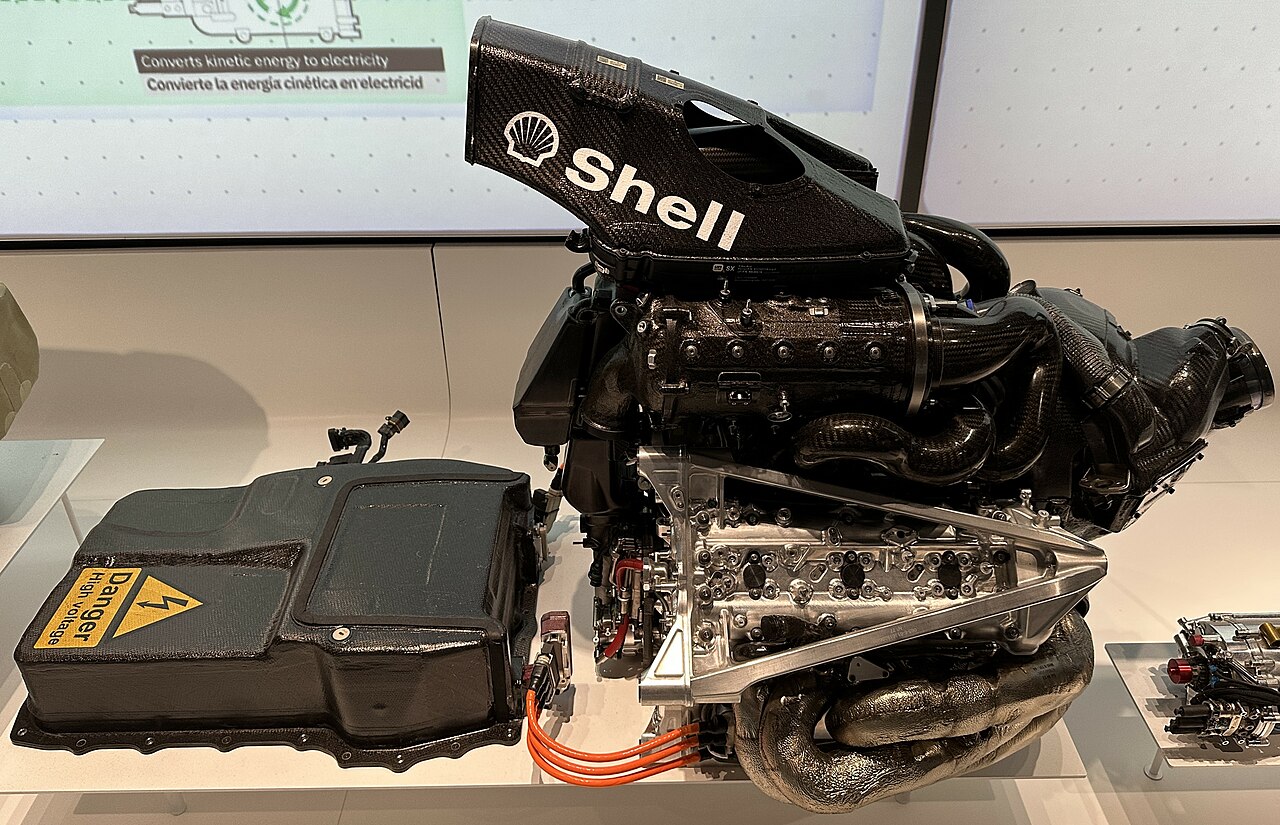 5225C, CC BY-SA 4.0, Wikimedia Commons
5225C, CC BY-SA 4.0, Wikimedia Commons
NASCAR: V8 Engine
NASCAR's V8 engine is an American classic. Instead of F1's six, it has eight cylinders in that V formation. More than that, NASCAR's engine has no hybrid system and only uses combustion. It has no turbocharge either.
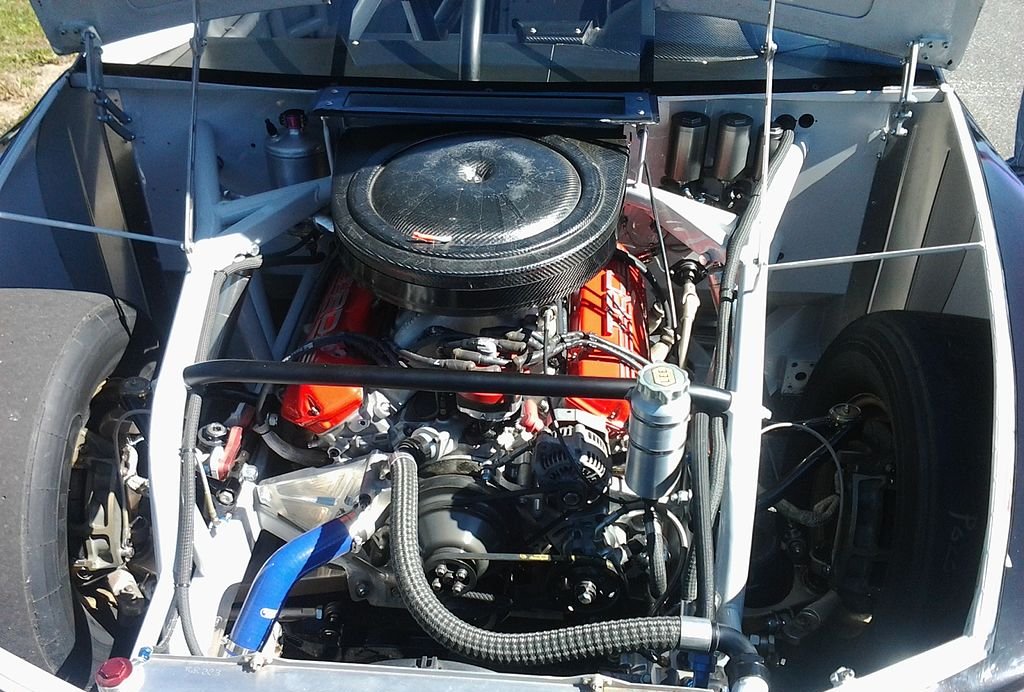 Dismas, CC BY-SA 3.0, Wikimedia Commons
Dismas, CC BY-SA 3.0, Wikimedia Commons
Formula 1: Spread Out Cars
The variability even within one track in Formula 1 often means F1 cars become more spread out as the race goes on. It's not uncommon to lap back markers by the end of the race, but otherwise you don't see much of anyone that far behind you.
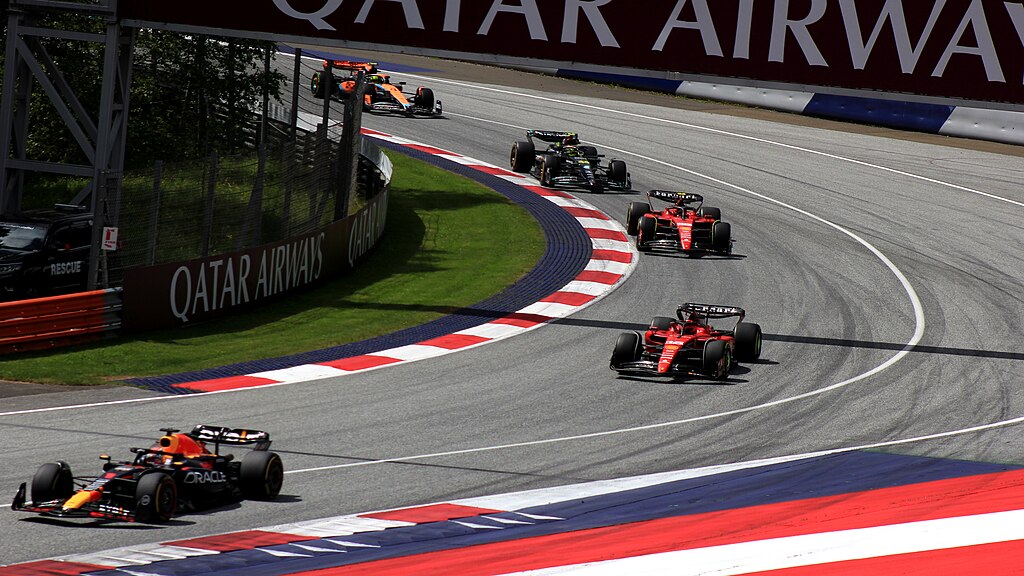 Lukas Raich, CC BY-SA 4.0, Wikimedia Commons
Lukas Raich, CC BY-SA 4.0, Wikimedia Commons
NASCAR: Pack Racing
NASCAR is much more involved in "pack racing," as all of the cars—whether they are on the lead lap or not—are generally racing more alongside one another than they are in Formula 1. NASCAR drivers must then pay close attention to their surroundings.
Formula 1: Careful Passing
Formula 1 circuits have varying degrees of difficulty when it comes to passing other cars, but it is often done on straightaways or else corners using late-braking techniques and racing line strategies. The car in front will usually try to defend by blocking the inside line or another advantageous entry point.
In Formula 1, any contact with the cars is quite dangerous, as they are so light and going at such high speeds. Contact results in accidents more often than not.
NASCAR: Bump And Pass
Most NASCAR passing is done on the corners of the track, generally through "dive bomb" techniques where, as with Formula 1, drivers go late on the brakes to get ahead of the other car.
Unlike in Formula 1, however, some contact is tolerated. In fact, the "bump and pass," although frowned upon especially in longer and faster circuits, is not an uncommon move in NASCAR. This is where the passing car bumps the car ahead of them, destabilizing its trajectory before getting ahead.
Formula 1: Drag Reduction System
In both Formula 1 and NASCAR, using slip streams and other drag reduction methods is crucial for passing and getting the best lap times. In F1, there is even a built in "Drag Reduction System" (DRS) in the cars. However, the DRS can only be used in certain areas, and even then only when a lagging car is within a second of a leading car.
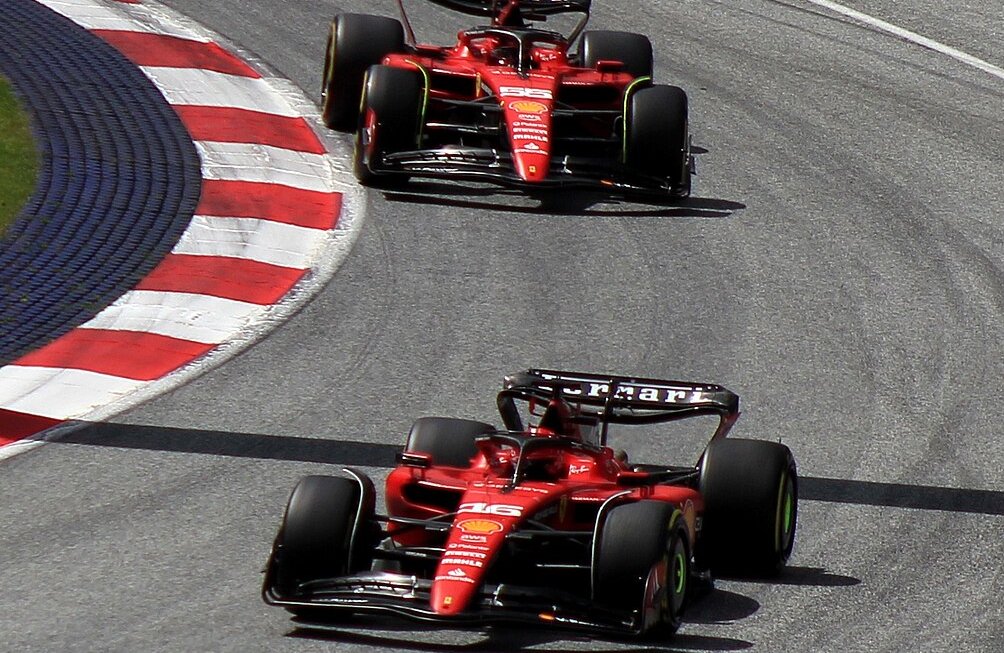 Lukas Raich, CC BY-SA 4.0, Wikimedia Commons
Lukas Raich, CC BY-SA 4.0, Wikimedia Commons
NASCAR: Drafting Partnerships
NASCAR also uses slipstreams in racing, but through different and often more cooperative means. By using the lead car's slipstream, a tailing car can draft through the low-resistance area and "slingshot" through the track. It's so efficient, many drivers will partner up to push each other to the front using drafting.
Formula 1: Pit Stop Regulations
Overall, Formula 1 employs far more red tape than NASCAR when it comes to races. For one thing, a pit stop (where a driver comes into the pits to change tires) is mandatory. When it happens and how many times it happens is up to a team's strategy, but it must happen at least once.
NASCAR: Pit Stop Free For All
In NASCAR, there is no mandatory pit stop. However, this doesn't mean that there are no pit stops. A good NASCAR driver will strategize about when to go in to refuel their car and will also think about when to get a fresh set of tires, as tire degradation over the course of a race makes a car harder to control. Speaking of tires...
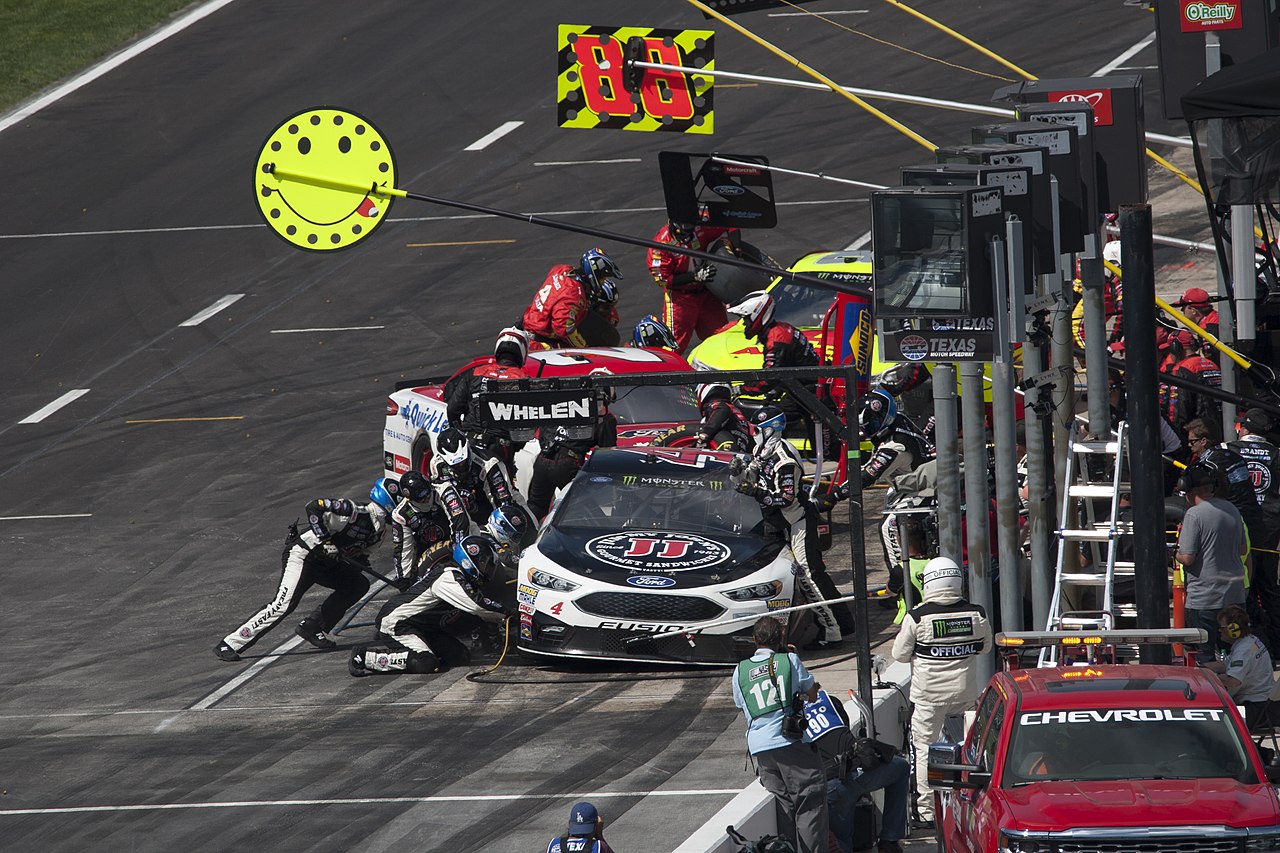 rgbRandomizer, CC BY-SA 2.0, Wikimedia Commons
rgbRandomizer, CC BY-SA 2.0, Wikimedia Commons
Formula 1: A Range Of Tires
When it comes to tires, Formula 1 has a whole range. In dry weather, drivers will choose between soft, medium, and hard compound tires. Soft tires are very grippy but degrade easily, hard tires are slippery but have more endurance throughout a race, and mediums are in the middle. In semi-wet weather, they can go for intermediates, and in very wet weather they can go for full slicks. All tires are supplied by Pirelli.
In recent years, it has also become mandatory for F1 drivers to change their tire compound in both qualifying and the race.
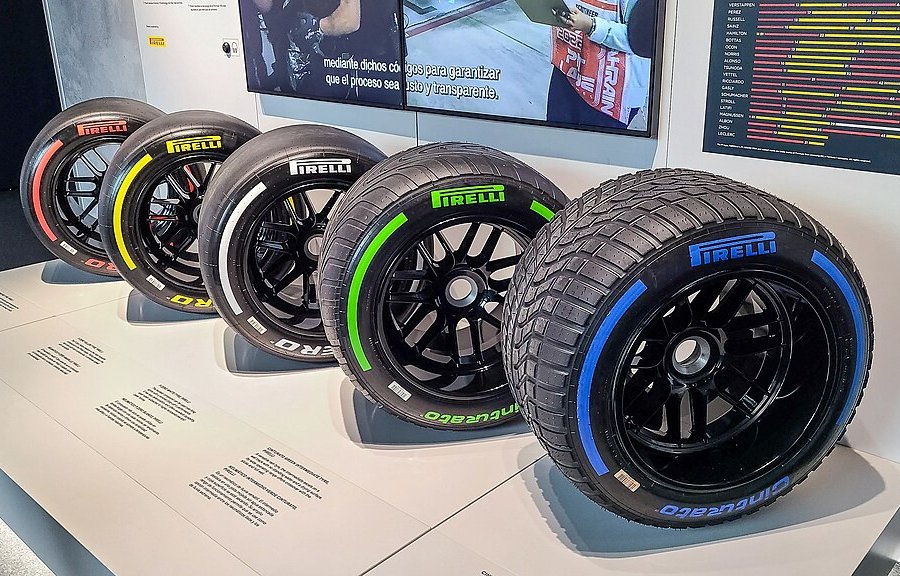 Steve, CC BY-SA 2.0, Wikimedia Commons
Steve, CC BY-SA 2.0, Wikimedia Commons
NASCAR: One And Done
In dry weather, there's only one tire to go for in NASCAR: the Goodyear Radials. That said, there are four subtypes to these that drivers will opt for depending on the track type: speedway, intermediate, road course, and short track.
In wet weather, they have a Goodyear slick tire to use.
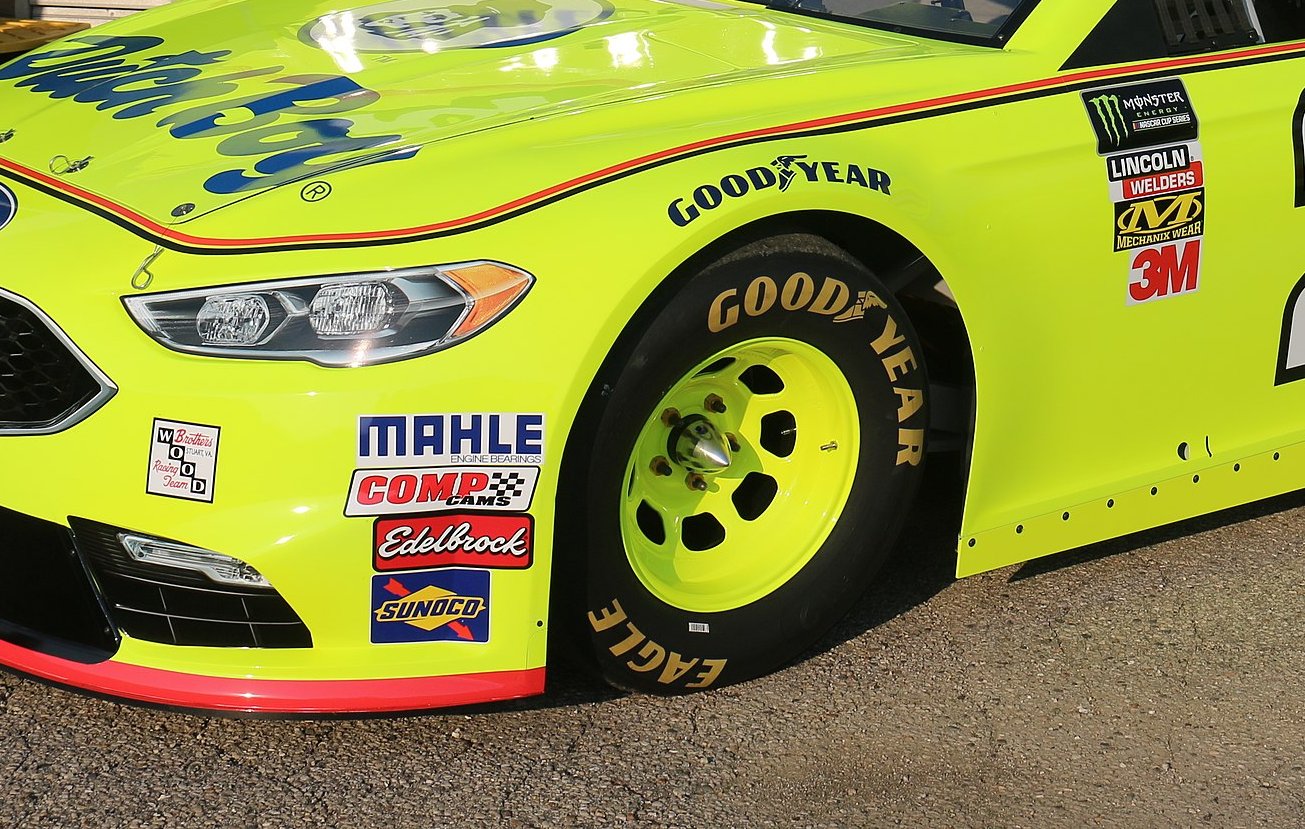 Royalbroil, CC BY-SA 4.0, Wikimedia Commons
Royalbroil, CC BY-SA 4.0, Wikimedia Commons
Formula 1: Safety And The Halo System
Formula 1 has had many fatalities in its long history, and one of its most recent safety upgrades is also its best: Drivers now have a metal "halo" going up over their head, protecting them not just from debris but from contact with the road should the car flip over.
The F1 car's single-shell, monocoque structure also cocoons the driver in the event of crashes.
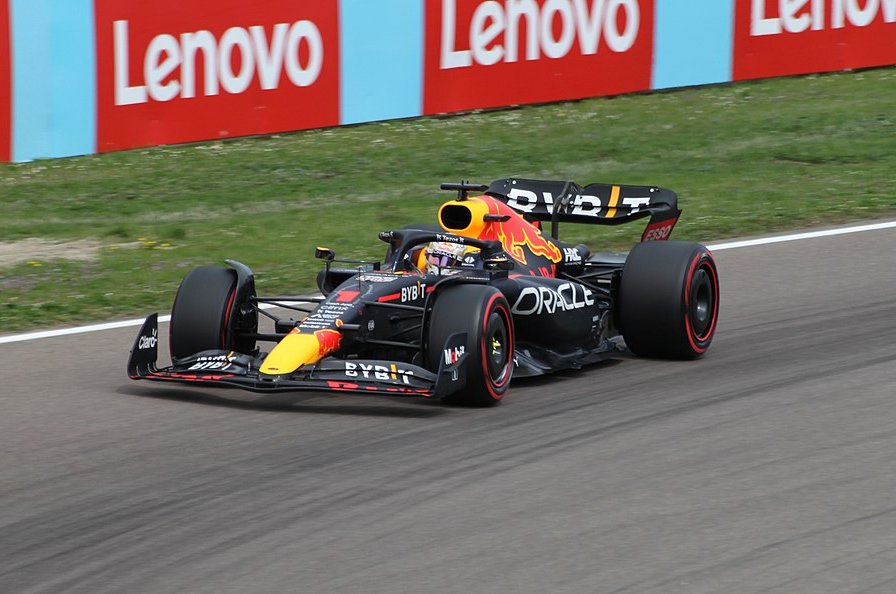 Wastrick, CC BY-SA 4.0, Wikimedia Commons
Wastrick, CC BY-SA 4.0, Wikimedia Commons
NASCAR: Safety And The Roll Cage
The NASCAR car's counterpart to F1's halo is the roll cage, which is pretty much what it sounds like. It has safety bars that frame the racer and protect them if the car flips.
Plus, unlike the fragile and light F1 cars, a stock car has a reinforced, heavy steel body that can hold up in a crash.
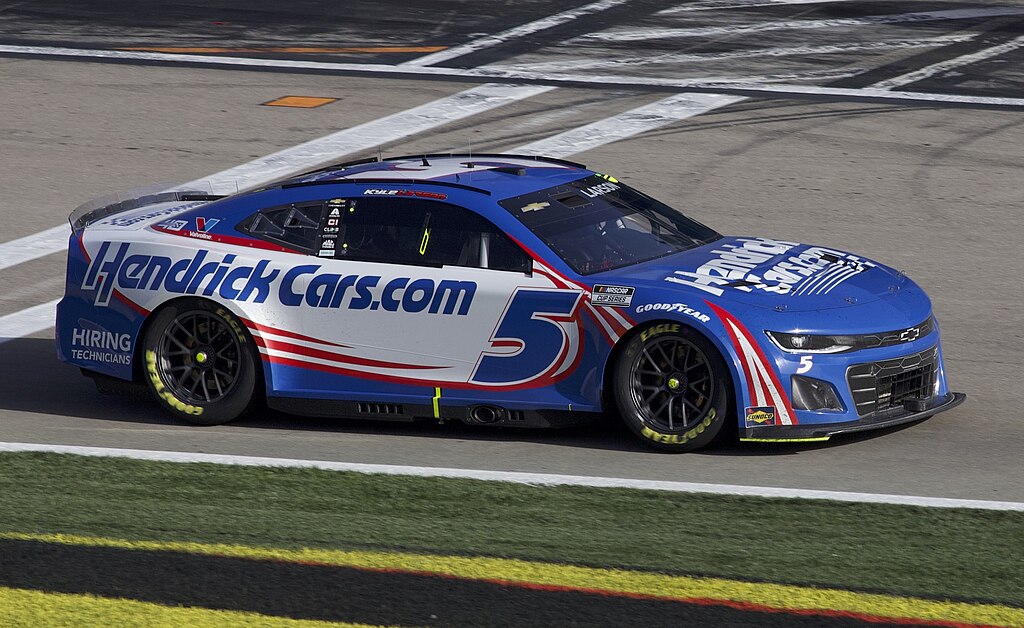 TaurusEmerald, CC BY-SA 4.0, Wikimedia Commons
TaurusEmerald, CC BY-SA 4.0, Wikimedia Commons
Formula 1: Race Time
An average Formula 1 race lasts between 90 minutes and two hours, depending on weather, accidents, safety cars, and other variables.
 Andrew Locking, CC BY 2.0, Wikimedia Commons
Andrew Locking, CC BY 2.0, Wikimedia Commons
NASCAR: Race Time
Much as you'd expect for the endurance quality of NASCAR racing, the race times are much longer than in Formula 1. The average NASCAR race can be anywhere between two and four hours, depending on how the race goes.
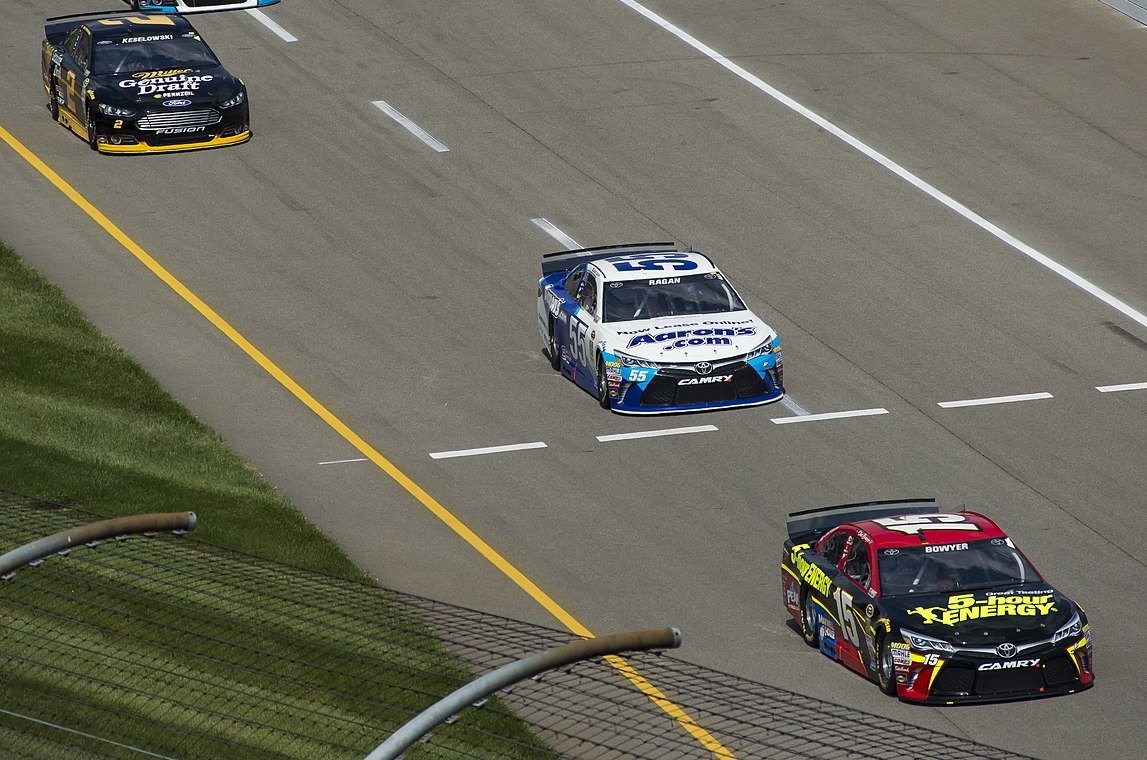 Paula R. Lively, CC BY 2.0, Wikimedia Commons
Paula R. Lively, CC BY 2.0, Wikimedia Commons
Formula 1: Cars Entered
In Formula 1, 10 teams with two cars each race, for a total of 20 cars starting a given race.
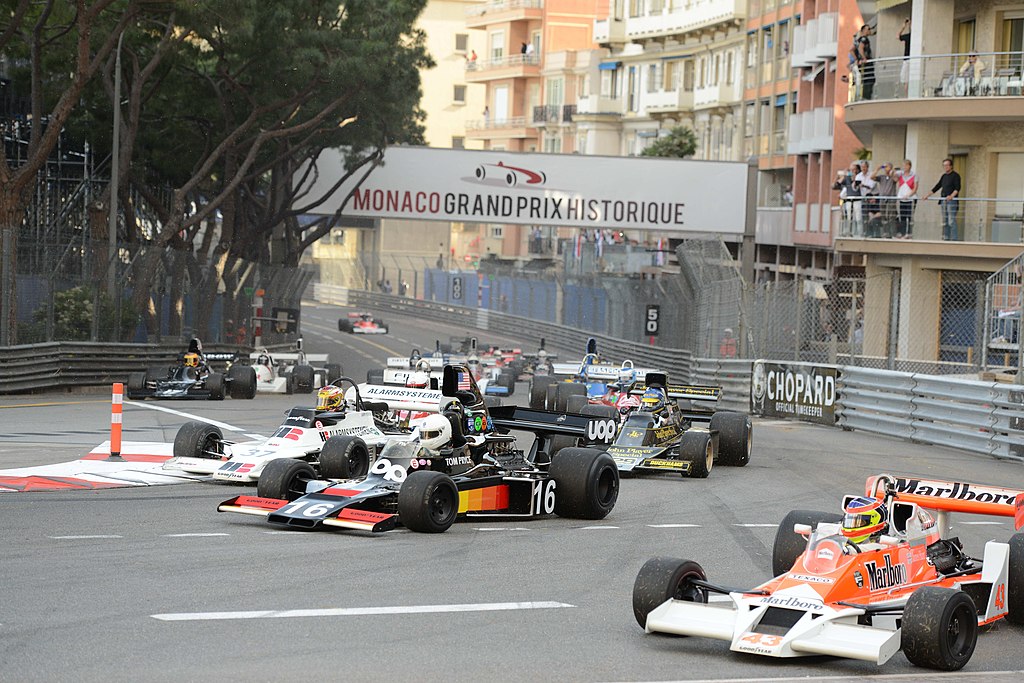 United Autosports, CC BY-SA 2.0, Wikimedia Commons
United Autosports, CC BY-SA 2.0, Wikimedia Commons
NASCAR: Cars Entered
Up to 40 cars can enter a NASCAR Cup Series race. 36 teams have "Charters" guaranteeing them a spot in the races.
Formula 1: Signature Race
For Formula 1, the signature race is surely the Monaco Grand Prix. Widely considered the jewel of the F1 circuit, they've been running the street race since 1929, and it draws celebrities who can watch from balconies or yachts.
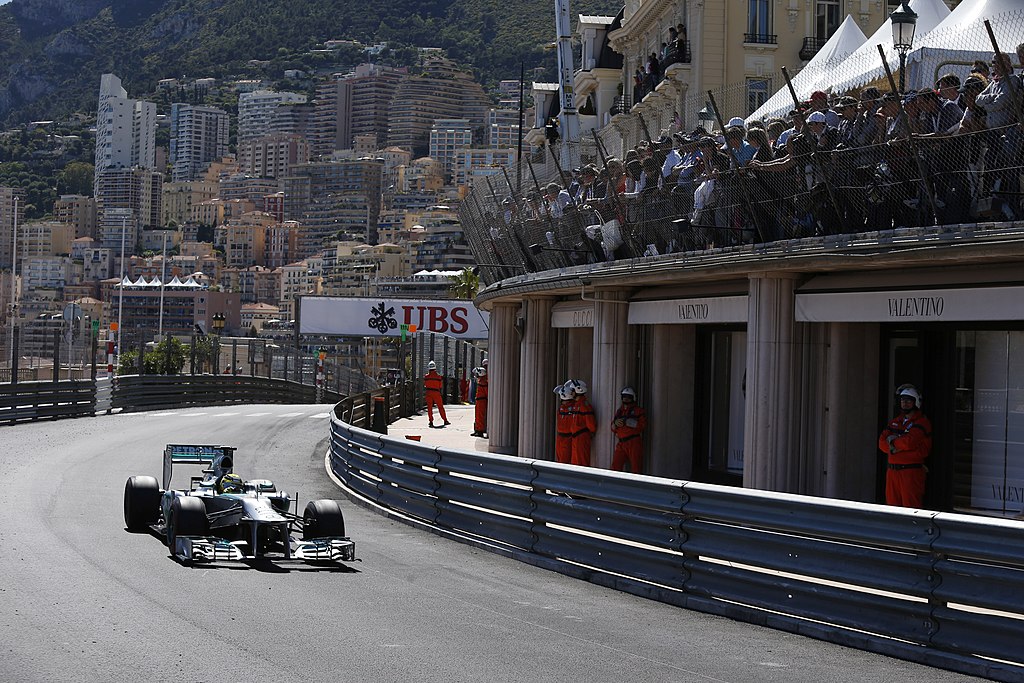 Charles Coates/LAT Photographic, CC BY-SA 2.0,Wikimedia Commons
Charles Coates/LAT Photographic, CC BY-SA 2.0,Wikimedia Commons
NASCAR: Signature Race
Running at the start of the NASCAR calendar, the Daytona 500 in Daytona Beach, Florida is NASCAR's answer to the Monaco Grand Prix. Boasting the largest purse of all the Cup Series races, it really gets things off with a bang. The first Daytona 500 was run in 1959.
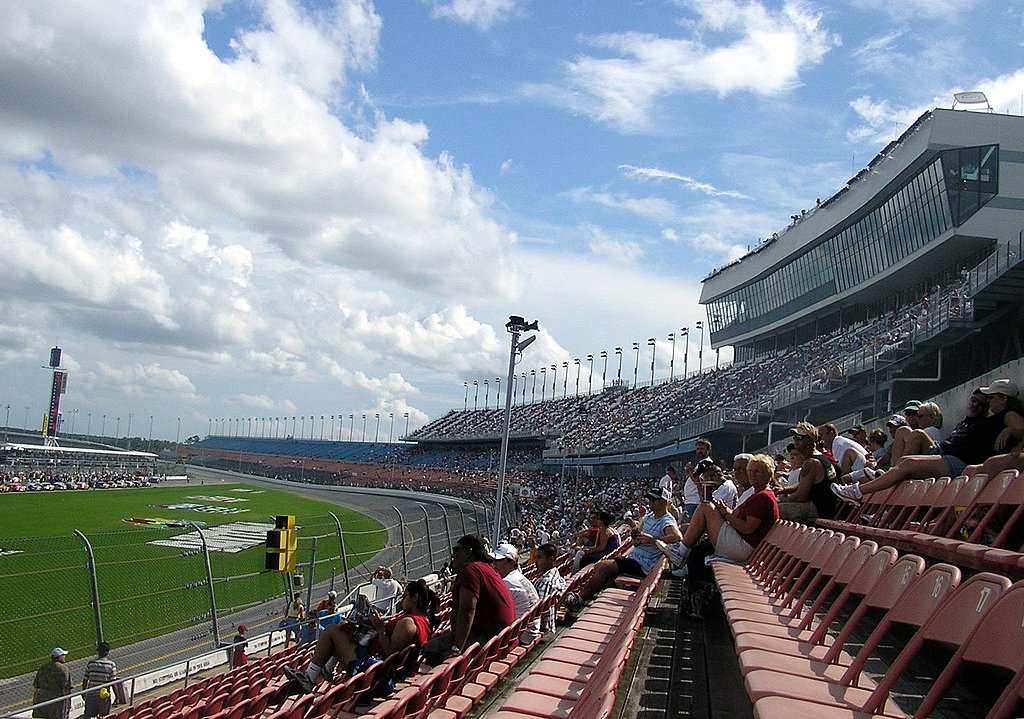 Mrmiscellanious, CC BY 2.5, Wikimedia Commons
Mrmiscellanious, CC BY 2.5, Wikimedia Commons
Formula 1: Tragedies
In Formula 1, 32 drivers have died or suffered fatal injuries while racing in a World Championship. When you count testing and non-Championship events, there have been 52 drivers who lost their lives.
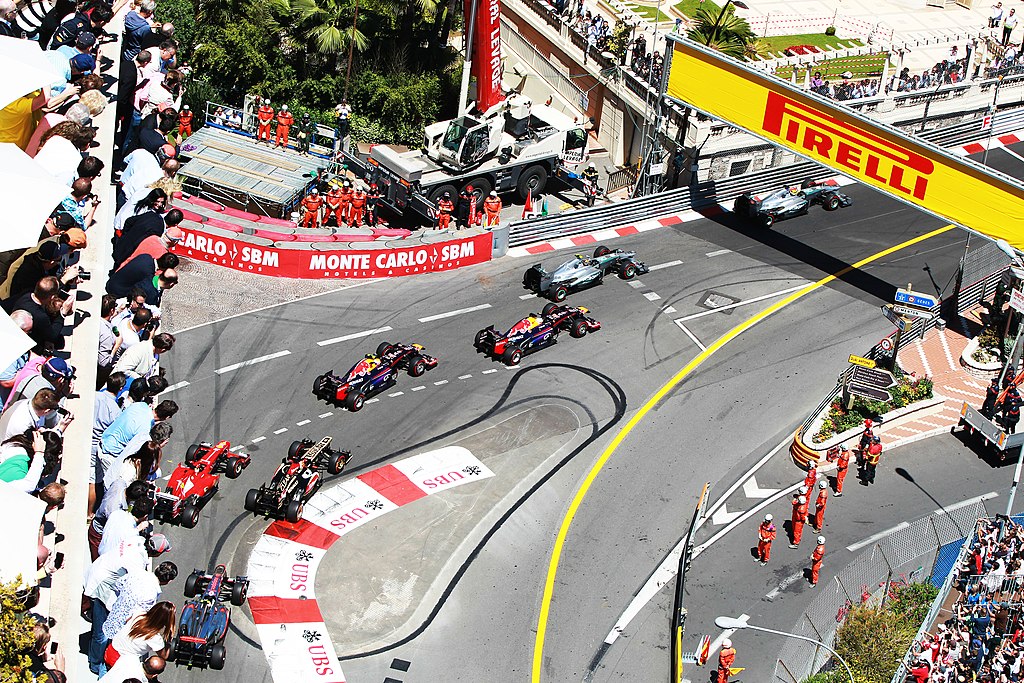 United Autosports, CC BY-SA 2.0, Wikimedia Commons
United Autosports, CC BY-SA 2.0, Wikimedia Commons
NASCAR: Tragedies
When it comes to the NASCAR Cup Series, the numbers are smaller, if still sobering. A total of 28 drivers have lost their lives during the series. Unfortunately, that number balloons to 108 if you count all NASCAR events.
Formula 1: In Memoriam
Formula 1's most shocking end was likely the legendary Ayrton Senna, who died in 1994 at the peak of his career, the same weekend as fellow F1 driver Roland Ratzenberger.
Less well-known but still poignant is Jochen Rindt, who died in 1971 while qualifying in Monza, and who actually won the World Championship posthumously.
 Martin Lee , CC BY-SA 2.0, Wikimedia Commons
Martin Lee , CC BY-SA 2.0, Wikimedia Commons
NASCAR: In Memoriam
NASCAR's most recent death is also its most infamous: Icon Dale Earnhardt Sr died in 2001 on the very last lap of the Daytona 500, breaking the hearts of Americans across the nation.
Neil Bonnett was another great who, after rising through the ranks with the help of Bobby Allison and becoming part of the "Alabama Gang," died in a crash after a shock mount malfunction in the 1994 Daytona 500.
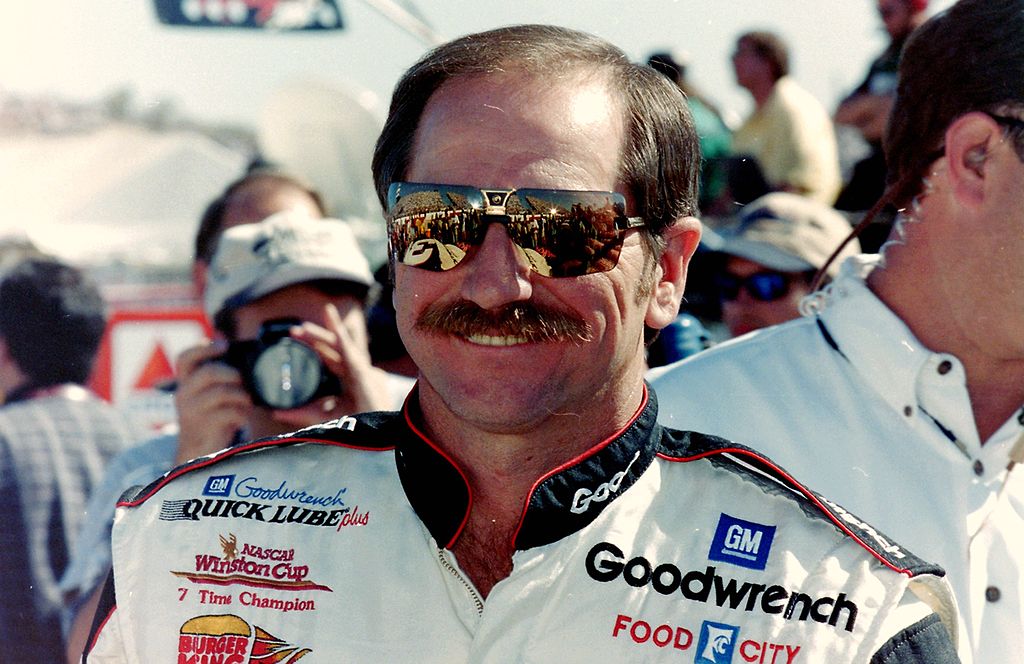 Darryl Moran, CC BY-SA 2.0, Wikimedia Commons
Darryl Moran, CC BY-SA 2.0, Wikimedia Commons
Formula 1: The Great Drivers
Some of the greatest drivers to ever race in Formula 1 include Juan Manuel Fangio, Niki Lauda, Ayrton Senna, Michael Schumacher, Lewis Hamilton, and Max Verstappen.
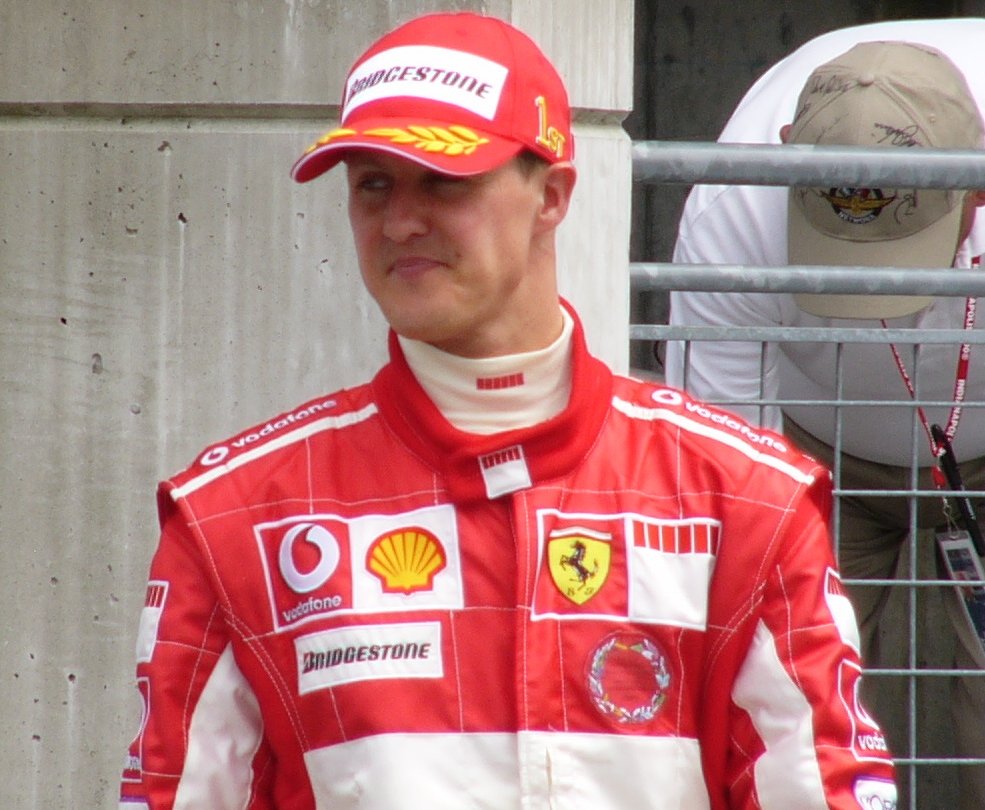 Ryosuke Yagi, CC BY 2.0, Wikimedia Commons
Ryosuke Yagi, CC BY 2.0, Wikimedia Commons
NASCAR: The Greats
Some of the greatest drivers to ever race in NASCAR include Bobby Allison, Dale Earnhardt Sr, Kyle Busch, David Pearson, Tony Stewart, and Jeff Gordon.
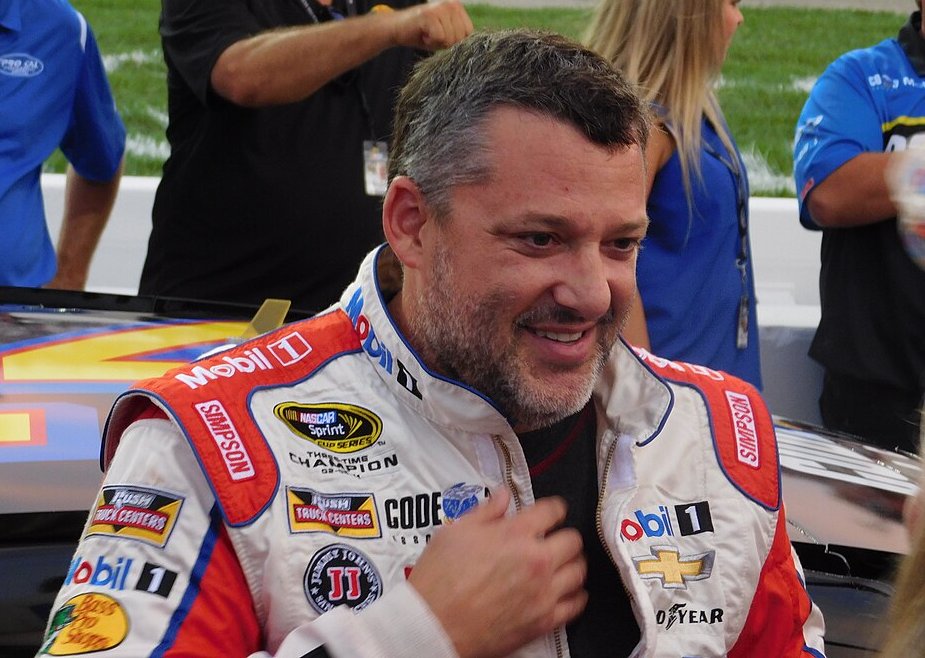 Zach Catanzareti, CC BY-SA 2.0, Wikimedia Commons
Zach Catanzareti, CC BY-SA 2.0, Wikimedia Commons
Formula 1: The Great Teams
Formula 1 has several illustrious constructors. Ferrari, being one of the oldest teams, is still the winningest, followed by Williams, McLaren, and Mercedes.
NASCAR: The Great Teams
The top four teams in NASCAR are Hendrick Motorsports, Petty Enterprises, Joe Gibbs Racing, and Roush Fenway Keselowski Racing.
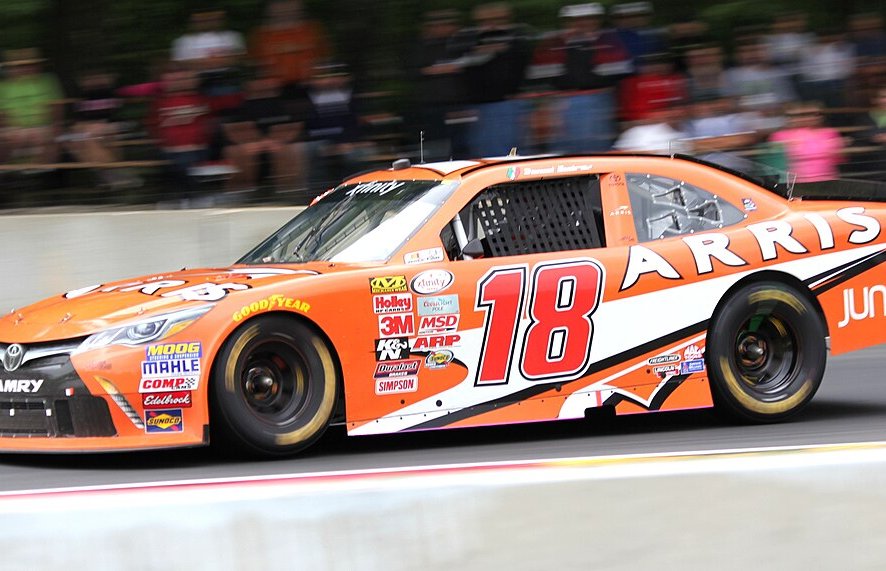 Royalbroil, CC BY-SA 4.0, Wikimedia Commons
Royalbroil, CC BY-SA 4.0, Wikimedia Commons
Formula 1: International Glamour
Since almost its very beginnings, Formula 1 has prided itself on its international reach, and the Grand Prix races have always taken place in multiple different countries. Nowadays, Formula 1's calendar takes it as far afield as Australia, Canada, and Qatar.
NASCAR: American As Apple Pie
Although NASCAR has international engagements, the vast majority of its events take place right in America.
Formula 1: No Refueling
In 2010, Formula 1's governing body the FIA banned refueling at pit stops, citing safety concerns. Before this, cars were only fueled as much as needed until a pit stop, making them faster and lighter. Now, part of the F1 strategy is working with a heavier car at the beginning and a lighter car at the end.
NASCAR: Refueling Strategy
Since NASCAR has no refueling ban, how much to top up the car at a pitstop and when is still a crucial part of winning a race. Everyone wants to have the lightest car the longest, but drivers have miscalculated in the past and run out of fuel on the track.
The Case For Formula 1
You might be more into Formula 1 if you like: Technological advancement, strategizing around regulation limitations, and meticulous racecraft.
 Lukas Raich, CC BY-SA 4.0, Wikimedia Commons
Lukas Raich, CC BY-SA 4.0, Wikimedia Commons
The Case For NASCAR
You might be more into NASCAR if you like: Drivers in greater control of their destiny, knife's edge decisions about fuel, and endurance racing.
Formula 1 Vs NASCAR: Conclusion
Now that you know the foundational differences between NASCAR and Formula 1, do you have a favorite? Will you be checking out one or the other? Let us know in the comments section, and let us know any big differences we missed!

